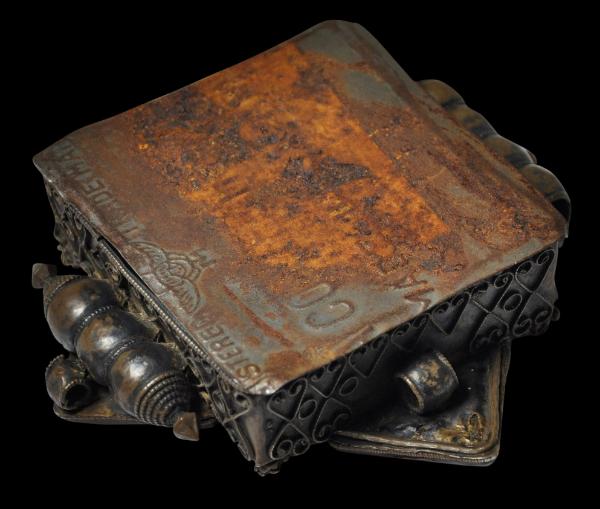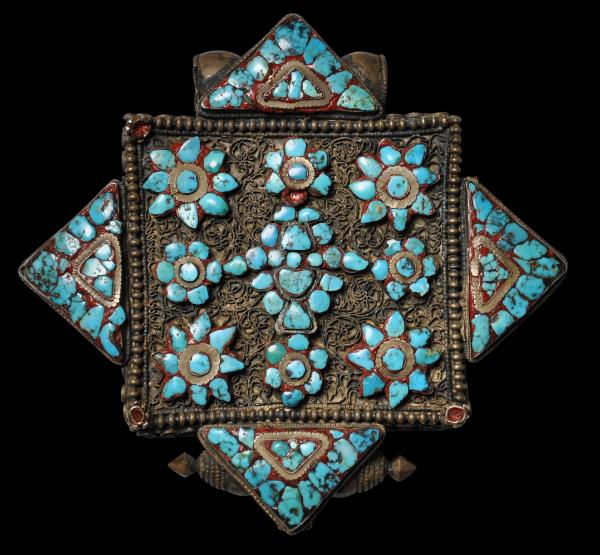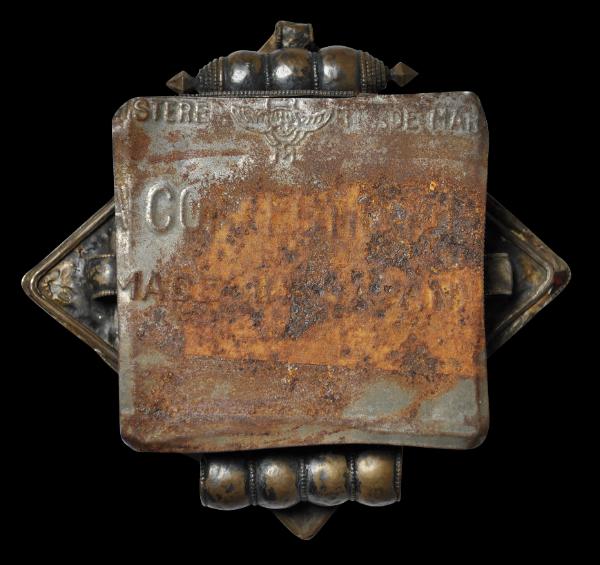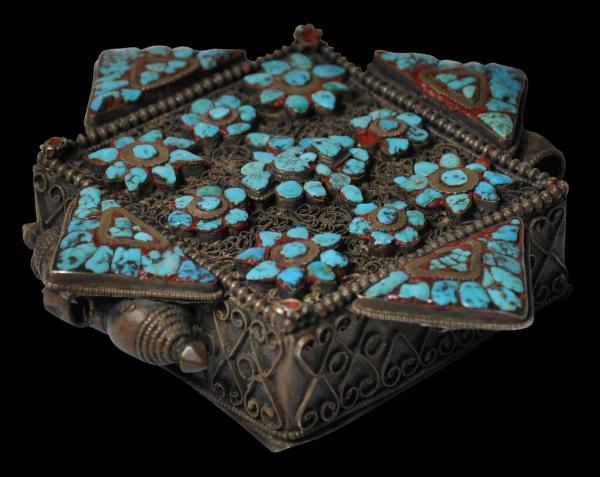
Silvered Copper Ga’u Box inset with Turquoise Cabochons, Tibet, 19th-early 20th century
Silvered Copper Ga’u Box inset with Turquoise Cabochons
Tibet
19th-early 20th century
height: 10.5cm, width: 11.3cm, thickness: 2.4cm, weight: 98g
This is a fine Tibetan amulet box or ga’u box but arguably its most interesting aspect is what has been used to construct the backing plate on the reverse: a section of semi-industrial metal packing tin, perhaps for Colman’s Mustard or something similar. Britain exported huge quantities of industrial and consumer goods to India during the 19th and early 20th century, and India, being a colony was a captive market for such goods. The packing material particularly if it was rolled tin and the like was salvaged and became a traded commodity around the sub-continent and the Himalayas. It is likely that the backing plate of the ga’u is an example of this exchange whereby such packaging would have been salvaged, flattened and bundled, and then traded into the Himalayas on the backs of donkeys.
Parts of a corporate logo and other information impressed into the metal can be seen on the back of the ga’u.
The ga’u itself is a double-square example and was a type worn by women particularly in and around Lhasa. The front plate is decorated with turquoise chips arrayed in flower and triangle motifs, set among silver or silvered copper filigree wire, surrounded by borders of more turquoise chips.
The ga’u was worn suspended from the top gadrooned tube, which shows considerable wear and age. The lower decoration is a stylised dorje ornament which hangs at the bottom when worn.
There are some minor losses to the stones but otherwise the box is in fine condition. Overall, it has a dark patina and obvious age and wear.
References
Clarke, J., Jewellery of Tibet and the Himalayas, V&A Publications, 2004.
Provenance
UK art market
Inventory no.: 4564
SOLD
here





